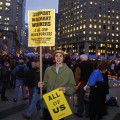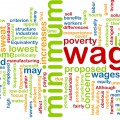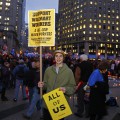As the rallying cry for a $15 minimum wage grows louder and gains more support, economists are warning that such a raise wouldn’t mean the same thing in all parts of the country.
When spending power of money in different geographical regions is taken into account, only one metro area’s residents would find that $15 is really worth $15.
The Pew Research Center recently dove into this topic, revealing wide disparities in regard to how well dollars actually spend in different parts of the country. To arrive at its findings, Pew looked at data related to “regional price parities,” or RPPs for the country’s 381 metropolitan statistical areas.
RPPs are developed by the Federal Bureau of Economic Analysis to measure differences in local price levels on things such as goods and services across the country relative to the overall national average.
The national average is set at 100. That means an area like New York City with a RPP of 122.3 will find its prices for goods and services about 22.3% higher than the national average.
In analyzing the RPPs for different metro areas, Pew researchers found only one area has an RPP of exactly 100. Only residents of Allentown, Pa., would find that $15 really adds up to $15 in purchasing power, Pew found.
Areas Where $15 Would Add Up to More
While many metro areas across the country have RPPs that far exceed the national average, there are some places where a bump in minimum wage could add up to a fair amount of increased spending power.
In a 2013 statistical report, the Bureau of Economic Analysis found these states fall below the national RPP, which means that $15 would add up to more in actual spending:
- Mississippi – 86.8
- Arkansas – 87.5
- South Dakota – 87.6
- West Virginia – 88.4
- Kentucky – 89.1
More Costly Areas
Perhaps not unsurprisingly, the bureau found that some of the more populous regions and states have the highest price parities, meaning it simply costs more to live in these places. Based on its 2013 data, the bureau pegs these five areas as the most costly in regard to RPPs:
- District of Columbia – 117.7
- Hawaii – 116.2
- New York – 115.3
- New Jersey – 114.5
- California – 112.3
Should the federal minimum wage rise to that $15 mark, Pew concludes it simply would not mean the same thing in all areas.
“If the goal were to guarantee low-paid workers everywhere in the country the same real purchasing power, that would require hundreds of different minimum wages, scaled to each locality’s cost of living,” the research center noted.
While changes to the federal minimum wage are not yet in play, areas such as Seattle, New York State and Los Angeles County have taken steps to raise their local minimum wages to $15 an hour.






